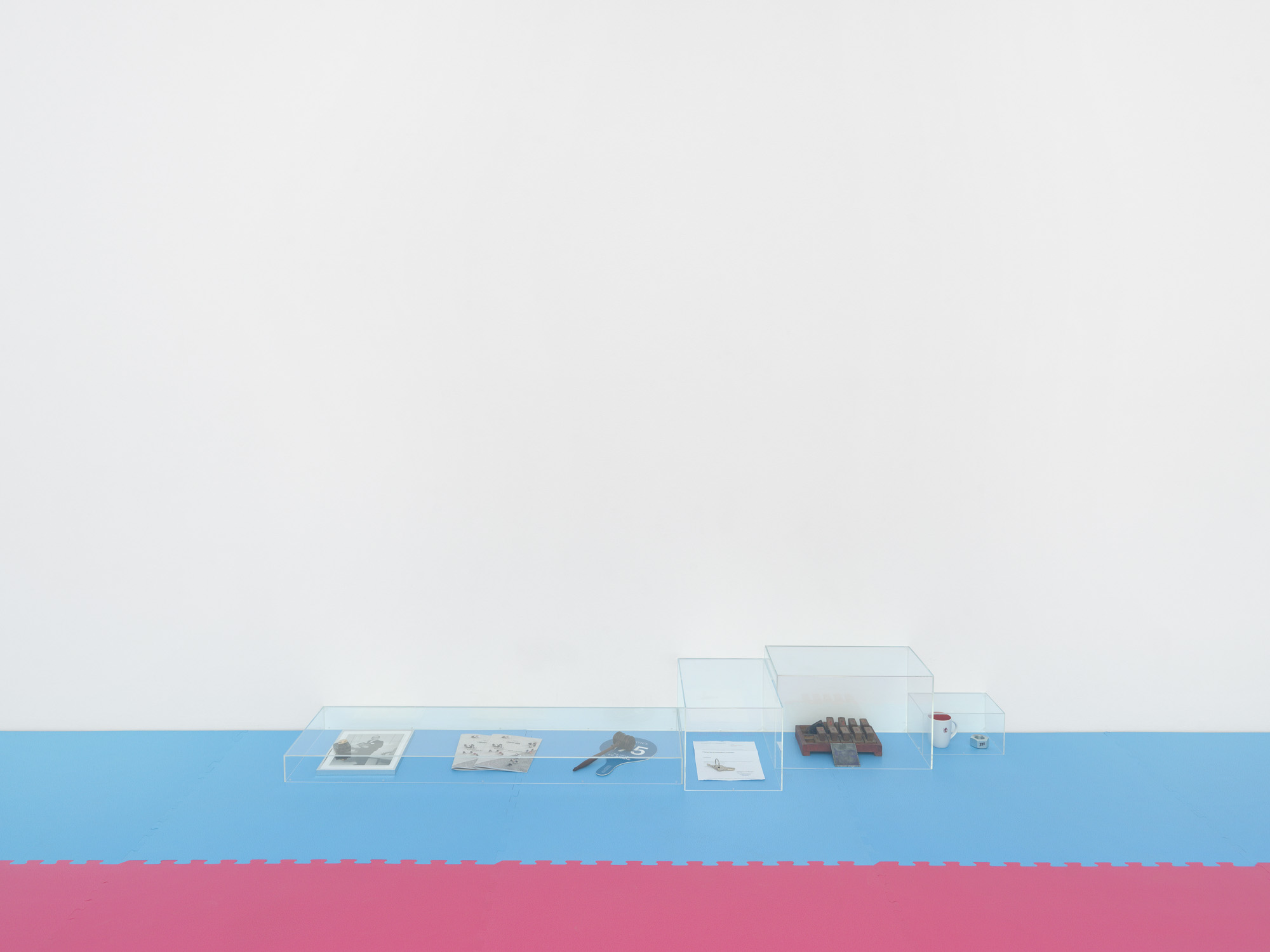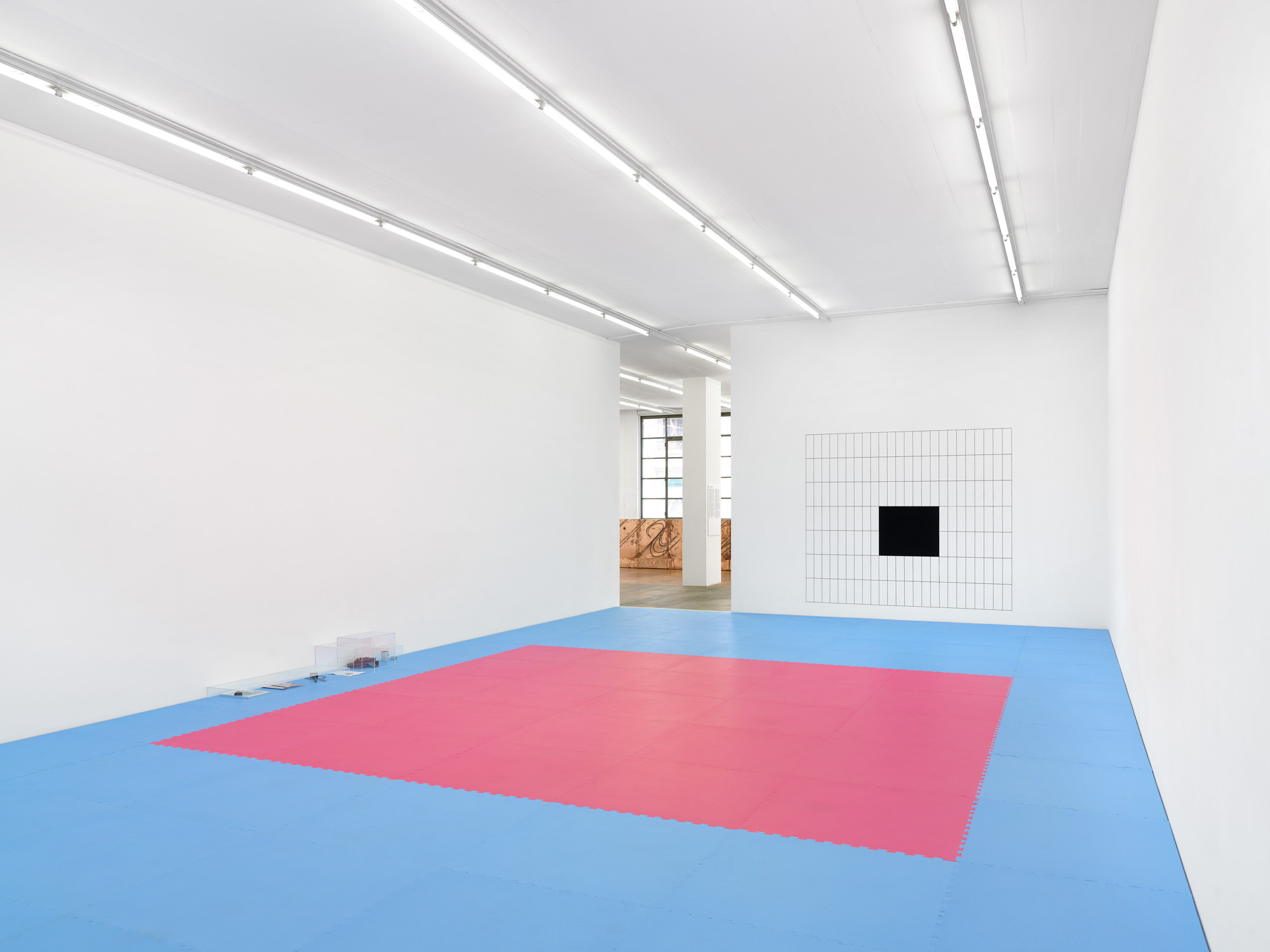For more than a decade, Ghislaine Leung (b. 1980) has explored how the value of art is determined and the ways in which artists both maintain their independence—and negotiate their dependencies. Her “scores” lay down the rules according to which her installations take shape. Through this eminently living process, she sets up a unique relationship with the museum. The scores she has produced with MAMCO include:
Violets 3
Ghislaine Leung, 2019
Score: All exhibition partners to provide a minimum of one object for display.
Mixed Sports
Ghislaine Leung, 2021
Score: Interlocking puzzle flooring tiles with proportional central square in complementary colours. No more than two colours of foam flooring tiles to be used. The tiles must fill the exhibition floor area.
Hours
Ghislaine Leung, 2022
Score: A wall painting the size of the artist’s home studio wall divided into all the hours of the week with the portion of studio hours available to the artist marked in black: Thursday 9AM-4PM, Friday 9AM-4PM.
Leung’s practice has echoes in the movements of the 1960s, in Conceptual art and in Lawrence Weiner’s Declaration of Intent (“The artist may construct the piece. The piece may be fabricated. The piece need not be built.”). It also harks back to “institutional critique,” which sought to shed light on the determinism of a context by defying the attendant rules. While acknowledging her artistic heritage, Leung is critical of its modern-day limitations: “Removing a wall to a gallery, exposing the contract of a work’s sale, exhibiting the crate used to ship a work—these all work or have worked at certain times.” These radical practices, conceived as a quest for transparency, are no longer sufficient to constitute a genuinely critical process. Institution-commissioned pieces, they frame the institution itself in a more positive light, knowingly exposing itself to the artist’s critique. Moreover, the dematerialization inherent in formal, rules-based art no longer guarantees the artist’s independence from the institution.
Leung’s scores instead seek to examine the fraught space of dependency to articulate the necessarily co-produced nature of art and its value structure. In this sense, though the artist may not construct or fabricate the piece, it is nevertheless built. The institution's carrying of the work is more than just a recognition of its labor form, and dependencies, but also how this supports Leung's dependencies—of her child on her, and to the jobs that supplement her income as an artist. In this way, transparency is expanded and problematized via an acknowledgement of dependency: “My desire to mask my situation is a disadvantage to the understanding of the work, and our mutual ability to understand and advocate for the work. To reflect on the constitutive means of production available to, not just me, but many artists navigating jobs and lives.” Through her complex, material practice and the web of interdependencies she explores, Leung focuses on the question of agency and seeks to set up new and different kinds of relationships.
- Exhibition curated by Julien Fronsacq

